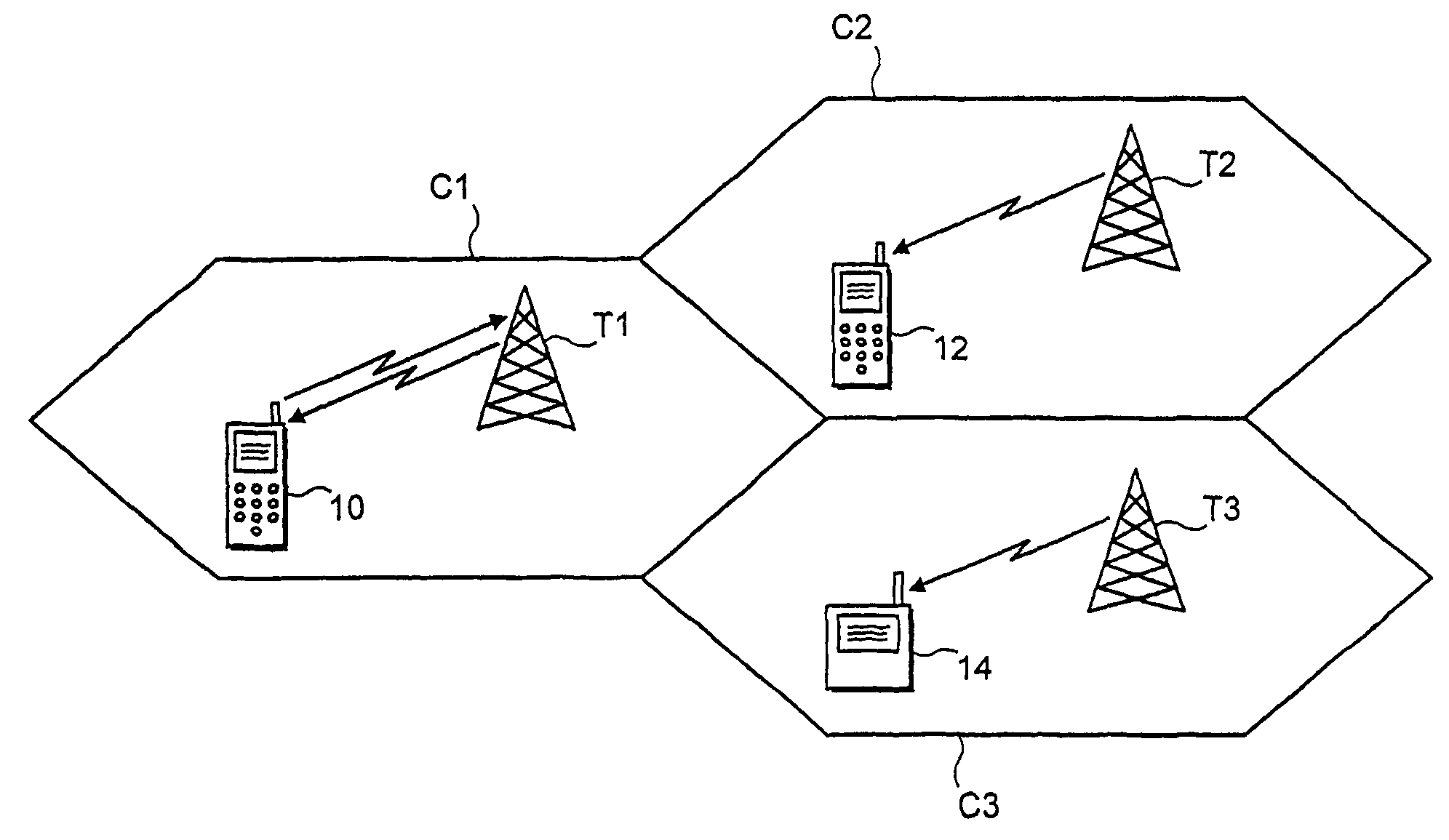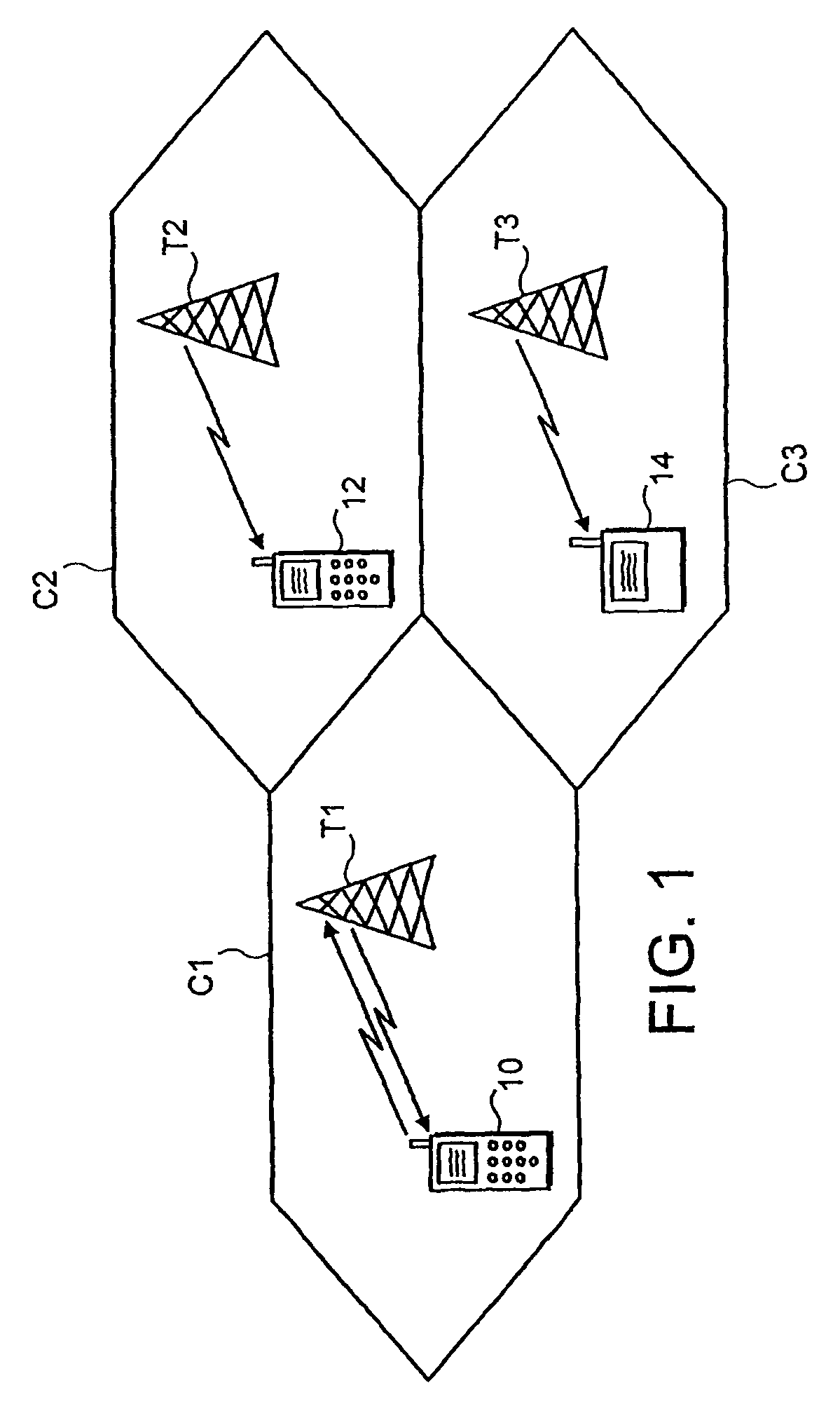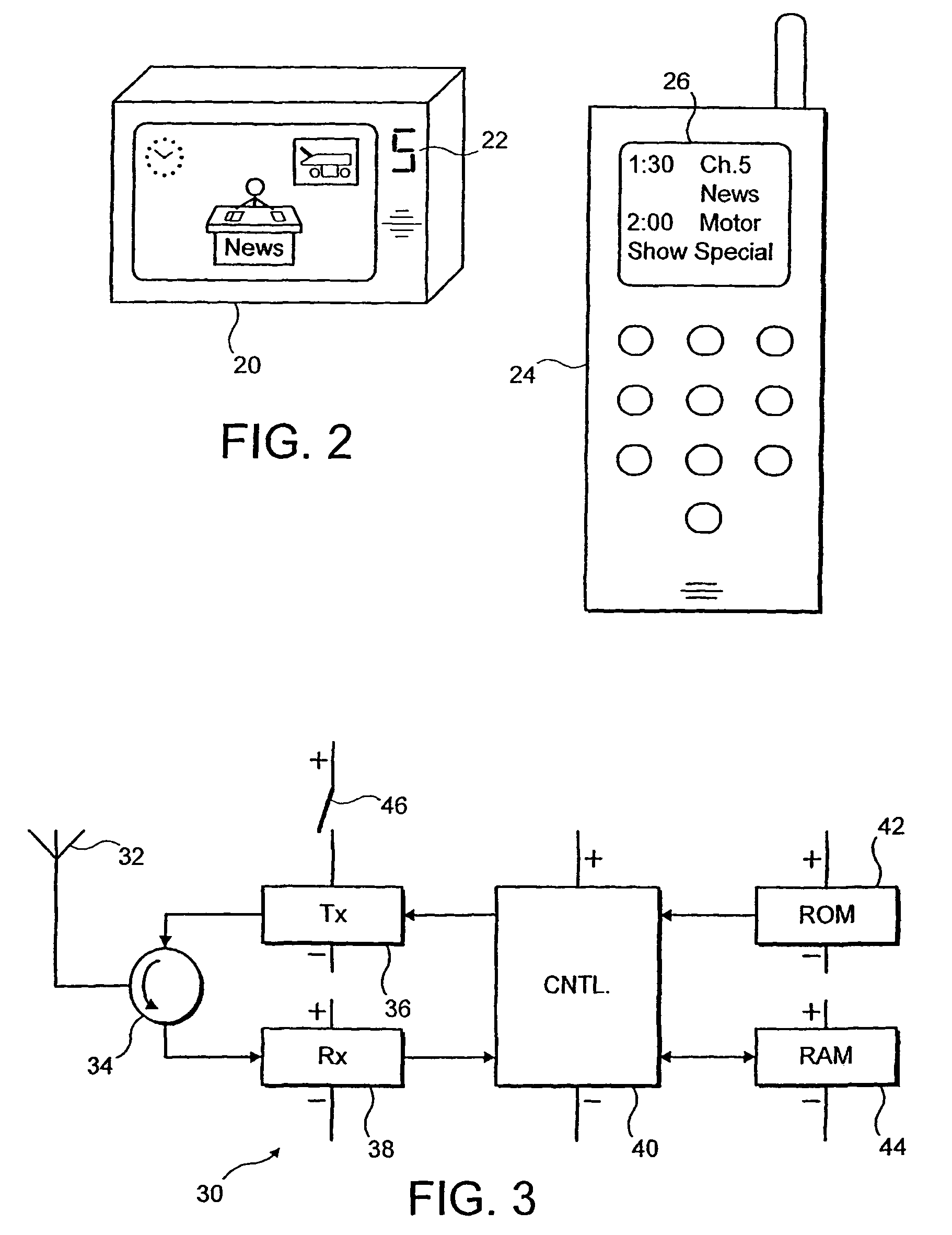Mobile telephone with receive only mode
a mobile telephone and receive only technology, applied in the field of communication networks, can solve the problem of not being able to receive calls, and achieve the effect of reducing battery power
- Summary
- Abstract
- Description
- Claims
- Application Information
AI Technical Summary
Benefits of technology
Problems solved by technology
Method used
Image
Examples
Embodiment Construction
[0021]FIG. 1 shows three cells C1, C2, C3 of a cellular transceiver system each having a respective transceiving station T1, T2, T3. The cells are illustrated as hexagonal areas (as is traditional) but, of course, in practice the areas served will be irregular in shape and generally overlap somewhat. The network may operate under GSM, GPRS, EDGE, UMTS, CDMA-One, I-Mode, IS-136, CDMA-2000 or any other suitable standards. While the invention can readily be implemented on packet-mode systems it may equally be implemented in circuit-mode systems.
[0022]A regular digital mobile telephone 10 is shown in cell C1 and this telephone is “on” and so is registered with that cell of the network. This telephone can make calls, receive calls, request information using the Wireless Application Protocol (W AP) and so on. In addition, however the telephone is arranged to monitor a particular channel amongst those transmitted in cell C1. This is preferably a paging control channel but it may be a logic...
PUM
 Login to View More
Login to View More Abstract
Description
Claims
Application Information
 Login to View More
Login to View More - R&D
- Intellectual Property
- Life Sciences
- Materials
- Tech Scout
- Unparalleled Data Quality
- Higher Quality Content
- 60% Fewer Hallucinations
Browse by: Latest US Patents, China's latest patents, Technical Efficacy Thesaurus, Application Domain, Technology Topic, Popular Technical Reports.
© 2025 PatSnap. All rights reserved.Legal|Privacy policy|Modern Slavery Act Transparency Statement|Sitemap|About US| Contact US: help@patsnap.com



